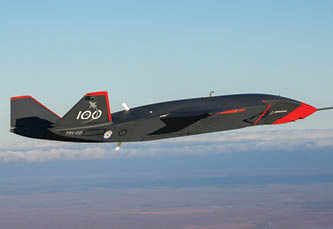Nestled at the crossroads of the Matilda Way and Overlander Way, some 770 kilometres west of Townsville, Cloncurry is a small yet vibrant country town with a rich history in mining, pastoral, transport, and aviation. Known as the “Friendly Heart of the Great Northwest,” Cloncurry continues to captivate visitors with its warm hospitality and significant historical landmarks.
The Birthplace of Qantas
Cloncurry holds a special place in Australian aviation history as the birthplace of Qantas. The story begins with an accidental meeting of Hudson Fysh, Paul McGinness, and Fergus McMaster in the Cloncurry Riverbed while Fysh and McGinness were scouting airstrips for the England-to-Australia Air Race. This serendipitous encounter led to the founding of what would become Queensland and Northern Territory Aerial Services (Qantas). Cloncurry soon became a key airport for the fledgling airline, with its first passenger, Alexander Kennedy, flying in from Longreach on November 2, 1922.
Remarkably, the original hangar—still in use today—proudly displays the words “Queensland and Northern Territory Aerial Service” above its doors. A memorial plaque, erected by the Fysh and McMaster families, marks the spot on the Cloncurry Riverbank where Qantas first took flight.
A Qantas memorial now stands down by the Cloncurry River to mark the serendipitous encounter of Hudson Fysh, Paul McGinness and Fergus McMaster.
As Sir Hudson Fysh aptly described:
“The idea of Qantas was conceived in Cloncurry; it was born in Winton; it grew up in Longreach; it came of age in Brisbane; it became an international airline in Sydney.”
A Lifeline from the Skies: The Royal Flying Doctor Service
Cloncurry is also the birthplace of another iconic Australian institution: the Royal Flying Doctor Service (RFDS). The seed for this revolutionary service was planted in 1917 when John Clifford Peel, a young pilot-in-training on his way to World War I, penned a letter to Reverend John Flynn. Peel suggested using airplanes to deliver medical services to remote areas, a concept that would transform rural healthcare across Australia.
Flynn, already passionate about improving life in the outback, embraced Peel’s visionary idea. Ten years later, after relentless fundraising and campaigning, Flynn’s dream became a reality. On May 17, 1928, the first RFDS flight—piloted by Captain Arthur Affleck in a DH50A plane named Victory—took off from Cloncurry, enroute to Kynuna and Julia Creek.
John Flynn Place: Celebrating Heritage
To honour this extraordinary legacy, Cloncurry’s residents, led by Reverend Fred McKay, lobbied for the creation of a museum dedicated to Flynn’s work. After extensive fundraising and community collaboration, John Flynn Place Museum was opened on October 4, 1988, by the then Duke and Duchess of York.
Spread across four levels, John Flynn Place Museum chronicles Flynn’s life, the pioneers who supported him, and the innovations that shaped modern outback healthcare.
Highlights include:
The Flying Doctors: The museum details the establishment of the RFDS, with exhibits on the first pilot, Captain Arthur Affleck, and Dr. Alan Vickers, one of the service’s most celebrated flying doctors. Cloncurry was chosen as the RFDS base due to its strategic location and 40-bed hospital.
The Pedal Radio: Communication was vital to the RFDS’s success, and Alfred Traeger’s pedal-powered radio made it possible. Installed first at Augustus Downs Station in 1929, this ingenious device connected remote areas to doctors and hospitals. The museum’s “Radio Gallery” pays tribute to Traeger, “the inventive genius who gave voice to the outback.”
School of the Air: Originally broadcast via RFDS transmitters, the School of the Air brought education to remote children. The museum showcases memorabilia, including the golden cobra microphone presented to Queensland’s first “School of the Air” teacher, Bid O’Sullivan, and student work from those early lessons.
Honouring Heroes: A Tribute to Veterans and Pioneers
A digital exhibit, opened by the Honourable Tim Fischer, honours four World War I veterans who significantly contributed to outback life and the Australian Inland Mission: Lieutenant John Clifford Peel, Padre Jim Stevens, Nurse Sister Grace Francis, and Pilot Eric Donaldson. Their stories demonstrate the strong connection between wartime innovation and peacetime advancements in rural Australia.
The top level of the museum also features a rotating photographic display. This year’s exhibit focuses on the life of an Australian Inland Mission padre, with Flynn’s successor, Reverend Fred McKay’s swag and camping equipment on display.
In the serene courtyard, visitors will find the final resting places of Captain Arthur Affleck and David Grieve Wyles, alongside memorial plaques dedicated to the pioneering individuals and organisations that helped shape the legacy of the RFDS and Cloncurry itself.
Plan Your Visit
John Flynn Place Museum is open year-round, Monday to Friday, and on weekends from May to September. For more information, contact:
John Flynn Place: (07) 4742 4174
Cloncurry Unearthed Visitor Information Centre: (07) 4742 1361













